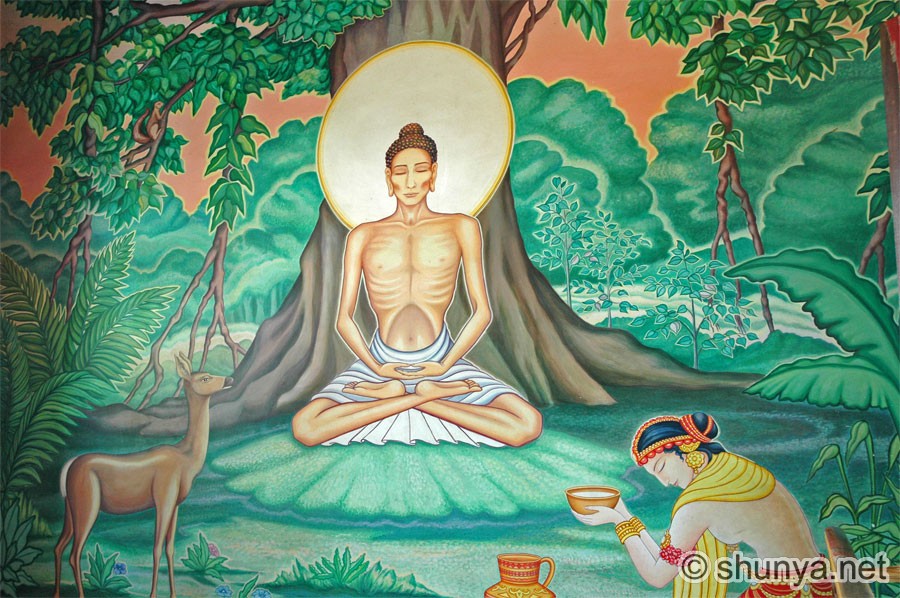As mentioned in the previous post, this is the first e-newsletter of the society. For a start, I utilized a very relevant theme, Buddhism & Health. If you continue reading here, you will find that Buddha didn't just educate us in ways to cultivate mental health but also several aspects of physical health. Similar to the Malay saying "Badan sihat, Otak Cerdas", it is mentioned in many parts of the Tipitaka that health is quintessential in uplifting our mental insight. As students of IMU, it is useful to get a glimpse of dietary and health care practices of the past and relate them to the common practices now.
Diet in Buddhism?
Did you know the Buddha went on a long anorexic diet before enlightenment?
Well, in India, 2500 years ago, extreme ascetic practices were very common. Many believed that inflicting pain in the form of starvation and self torture could uplift an individual spiritually. In the process of searching the truth, Ascetic Gotama once attempted this intensive practice which nearly claimed his life without any of the expected progress, nor results. As shown in picture below, he ended his attempt by accepting an offering of milk rice, a traditional Indian meal, prepared by lady Sujata. It was this meal which started his resolve that he should stop this practice and discover other methods. Soon after, he attained enlightenment under a Bodhi tree, becoming the Buddha.

"Health is the greatest gift,
contentment is the greatest wealth,
a trusted friend is the greatest relative,
Nibbana is the greatest bliss"
~Dhammapada verse 204~
Asceticism and many other extreme practices are obviously not the right way. Notice that the word "Too" in English is always used in negative terms. The only way to avoid this is by being mindful of food intake and consume food in moderation. That is why Buddhism teaches us to be moderate in every aspect of our life.
~part 1 end~
Part 2 will be released during the January post

No comments:
Post a Comment